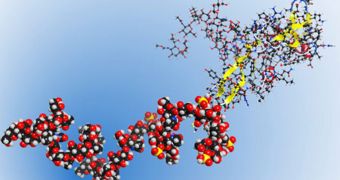A vital biomolecule has been sequenced for the first time at the Rensselaer Polytechnic Institute (RPI), by a team of experts coordinated by researcher Robert Linhardt. He is the Ann and John H. Broadbent Jr. ’59 Senior Constellation Professor of Biocatalysis and Metabolic Engineering at the institute.
Bikunin is a critically-important carbohydrate biopolymer, a member of a class of chemicals that is equally as important to medicine, society and science as DNA and proteins are. When DNA and proteins were first sequenced, it led to numerous advancements.
These included revolutionizing medical diagnostic techniques, improving forensic sciences, understanding the evolution and development of our own species, and lastly the creation of new, advanced, highly-effective drugs aimed at very specific targets.
But the biological “triumvirate” is incomplete without carbohydrate biopolymer molecules, researchers have always known. Now, the RPI investigators have just taken a step forward to surpass this obstacle.
What the team did was basically sequence a complete complex carbohydrate biopolymer. Details of their discovery were published in the October 9 advanced online issue of the top scientific journal Nature Chemical Biology.
In the paper – which is entitled “The proteoglycan bikunin has a defined sequence” – investigators note that the particular biomolecules they've sequenced, called bikunin, is involved in a vast array of processes, including the development of cell structures, blood clotting and diseases.
“Carbohydrate biopolymers, known as glycosaminoglycans, appear to be really important in how cells interact in higher organisms and could explain evolutionary differences and how development is driven,” Linhardt explains.
“We also know that carbohydrate chains respond to disease, injury, and changes in the environment. In order to understand how and why this all happens, we first need to know their structure. And today, at least for the simplest glycosaminoglycan structure, we can now do this,” he explains.
The reason why the team decided to work on bikunin is because the molecule has a relatively simple structure when compared to other members of its class, but it's still more complex than compounds such as starch or cellulose. It is made up of a proteoglycan with a single glycosaminoglycan chain attached.
“In our efforts to sequence carbohydrate biopolymers we don’t yet know if the defined structure we observe for this simple protoglycan will hold for much more complex proteoglycans.” Linhardt explains.

 14 DAY TRIAL //
14 DAY TRIAL //